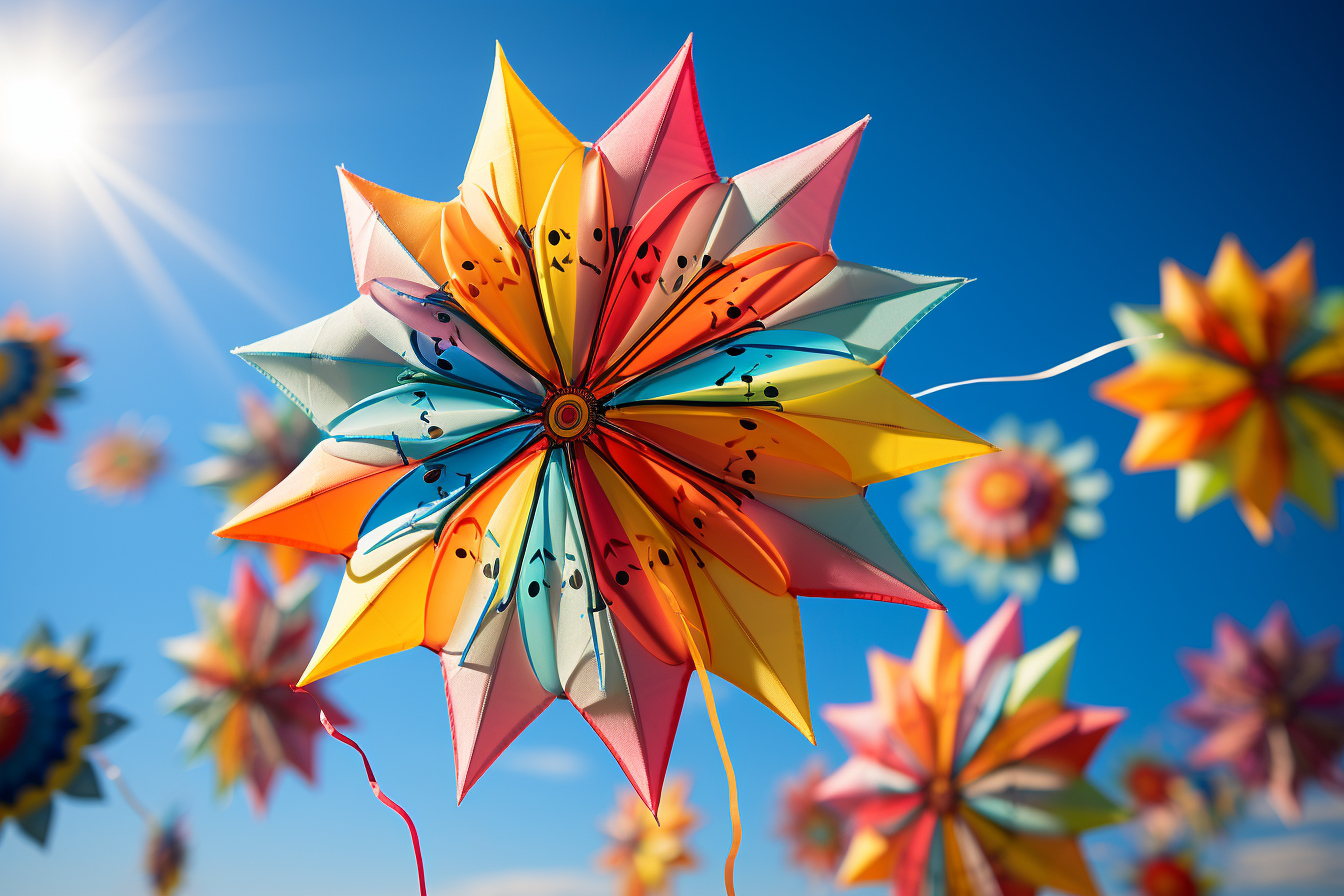Traditional kite festivals in Southeast Asia are colorful and mesmerizing spectacles that captivate visitors from around the world. These unique events offer an opportunity to delve into the cultural richness of the region while admiring beautifully designed kites soaring into the sky.
The charm of traditional kite festivals in Southeast Asia
When we talk about kite festivals, our imagination is immediately transported to images of multi-colored kites floating in the air, dancing with grace and elegance. Kite festivals in Southeast Asia are no exception to this rule, but they offer much more than just flying demonstrations. Indeed, these events are imbued with deep cultural and symbolic meaning.

Kites loaded with symbols
The kites used during these festivals are often handmade using traditional materials such as bamboo, rice paper and silk. Each kite is unique in its design and often loaded with symbolism. Some represent mythical animals or local deities, others celebrate historical events or ancient legends. Every detail is carefully thought out to convey a message deeply rooted in the culture of the region.
Exciting competitions
Traditional kite festivals in Southeast Asia are not limited to simple flying demonstrations. They also include exciting competitions where participants compete to create the most spectacular and creative kites. Judges evaluate the kites’ design, flight performance and ability to withstand changing winds. The competitions are not only an opportunity to showcase the talents of local artisans, but also to promote innovation in kite design.
Kite Festivals as Cultural Celebrations
Besides competitions and flying demonstrations, kite festivals in Southeast Asia are also cultural celebrations where music, dance and local cuisine play a crucial role. These events bring together local communities and visitors around a common passion: the celebration of tradition and creativity. Festival-goers can taste authentic dishes, watch traditional dance performances and enjoy captivating musical performances.
Kite festivals by country
Every country in Southeast Asia has its own kite festivals that are worth checking out. In Thailand, the Chiang Mai kite festival is one of the most famous. It takes place every year in February and offers a unique opportunity to see hundreds of kites soaring into the sky. In Vietnam, the Vũng Tàu Kite Festival is a tourist attraction, with kites of all shapes and sizes. Singapore, for its part, organizes the International Kite Festival, where artists from all over the world come to present their creations.
An unforgettable experience
Attending a traditional kite festival in Southeast Asia is an unforgettable experience that immerses you into the region’s culture. Whether to admire the colorful kites dancing in the sky, participate in thrilling competitions or simply let yourself be carried away by the festive atmosphere, these events offer real added value to visitors eager to explore new cultures.
The ecological impact of kite festivals in Southeast Asia
With environmental awareness increasing across the world, it is essential to examine the ecological consequences of large gatherings and cultural events. Although traditional kite festivals in Southeast Asia are a cultural treasure, they also have an environmental impact. Let’s explore this often overlooked dimension.
A double facet for the materials used
As mentioned earlier, festival kites are often made of traditional materials such as bamboo, rice paper and silk. If on the one hand, these materials are biodegradable and therefore considered ecological, their extraction and transformation can sometimes affect local ecosystems. For example, overharvesting bamboo can disrupt local wildlife and lead to deforestation.
The challenge of waste during large gatherings
Festivals attract thousands or even millions of visitors, which inevitably leads to an increase in waste. Despite the traditional essence of these festivals, food stalls and vendors may use plastic packaging or other non-biodegradable materials, which poses waste management challenges.
Green initiatives in response
Fortunately, with growing awareness, several festival organizers and local communities have started to take initiatives to reduce the ecological impact. Some festivals encourage the use of recycled materials for kite making or organize post-festival clean-up campaigns. Additionally, efforts are made to promote responsible consumption, such as encouraging stalls to use biodegradable packaging or reduce waste.
The importance of awareness
It is crucial that visitors are aware of the impact they can have on the local environment, even during a cultural event. Promoting an environmentally friendly attitude, not only during festivals but also in daily life, can go a long way in preserving the natural and cultural beauty of Southeast Asia.
The tradition of kite flying and intergenerational transmission
Traditional kite festivals in Southeast Asia, beyond their visual splendor, are also catalysts for intergenerational transmission. By diving into this dimension, we discover the importance of these events in the conservation and sustainability of ancestral know-how.
The role of elders in the kite flying tradition
Elders, custodians of traditions, play an essential role in passing on the know-how linked to the creation of kites. From a young age, they observed, learned and perfected the art of kite making. For them, each stage of manufacturing, whether it is the selection of materials, the design or the assembly, is a reflection of the history and identity of their community.
Learning at the heart of the family
In many Southeast Asian cultures, the art of flying a kite is often taught within the family. Parents and grandparents share their techniques and tips with the youngest, thus strengthening family bonds. This learning process is not only a transmission of skills, but also an opportunity to exchange stories, legends and family values.
Community workshops and the evolution of tradition
Faced with modernization and changing lifestyles, some fear that traditions are being lost. However, many communities have set up workshops dedicated to the art of kite flying. These workshops allow younger generations to learn ancestral techniques while integrating contemporary touches. The balance between tradition and modernity guarantees the sustainability of this art.
The educational value of festivals
Kite festivals, as showcases of culture, provide a unique opportunity for education. They allow young people to understand the value of tradition and the importance of preserving know-how. By attending these festivals, they become aware of the heritage that they will in turn carry.













